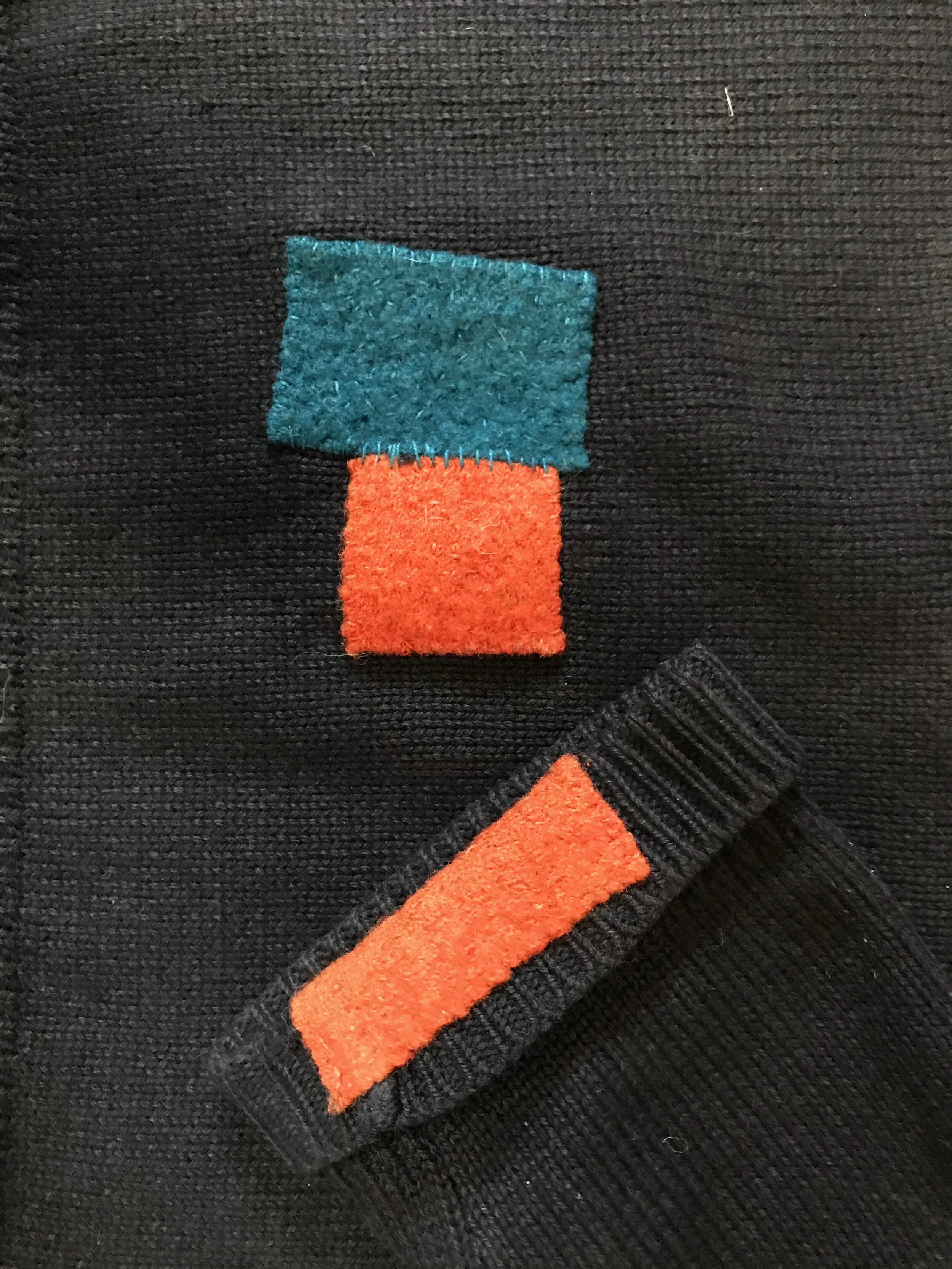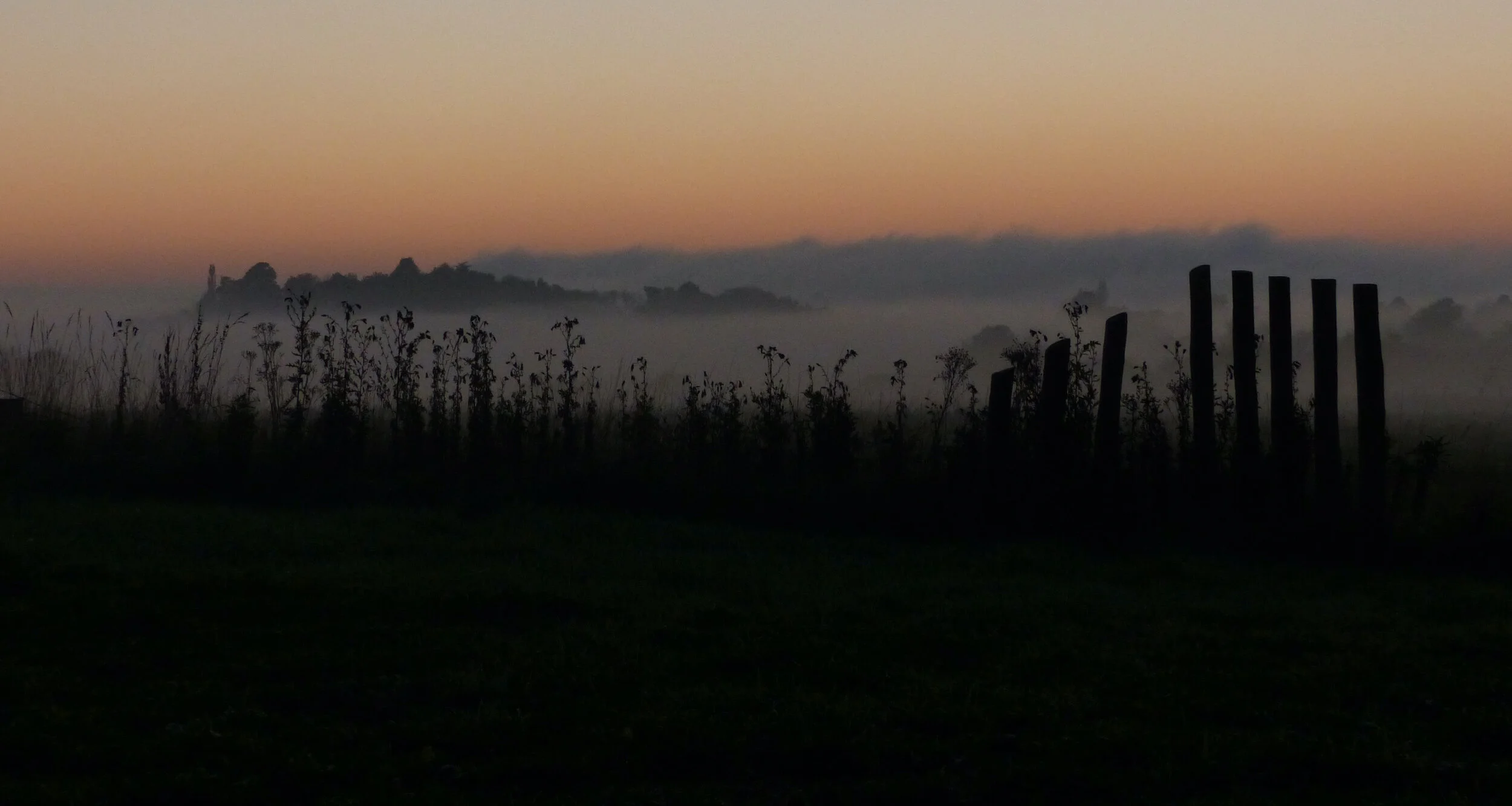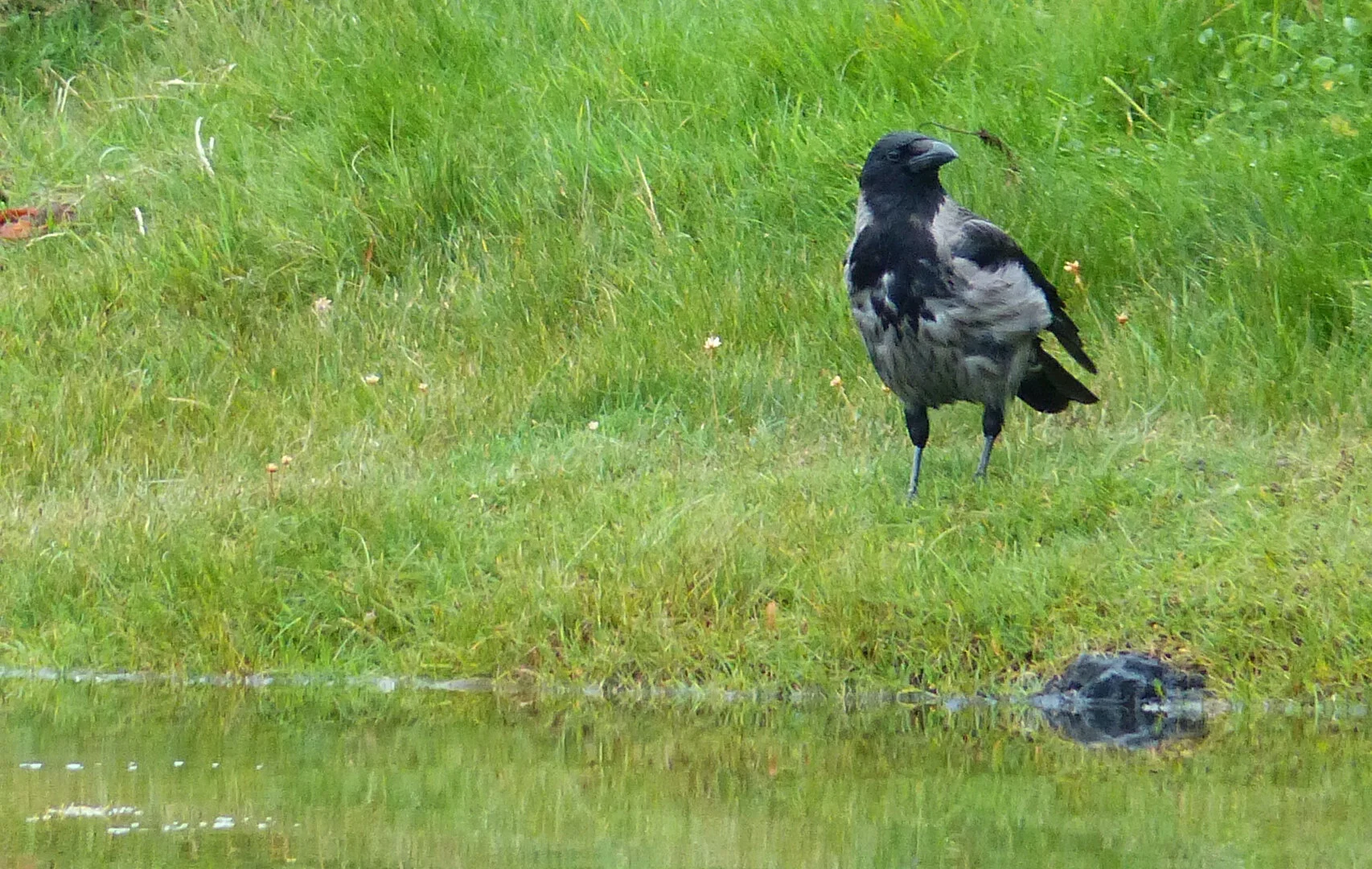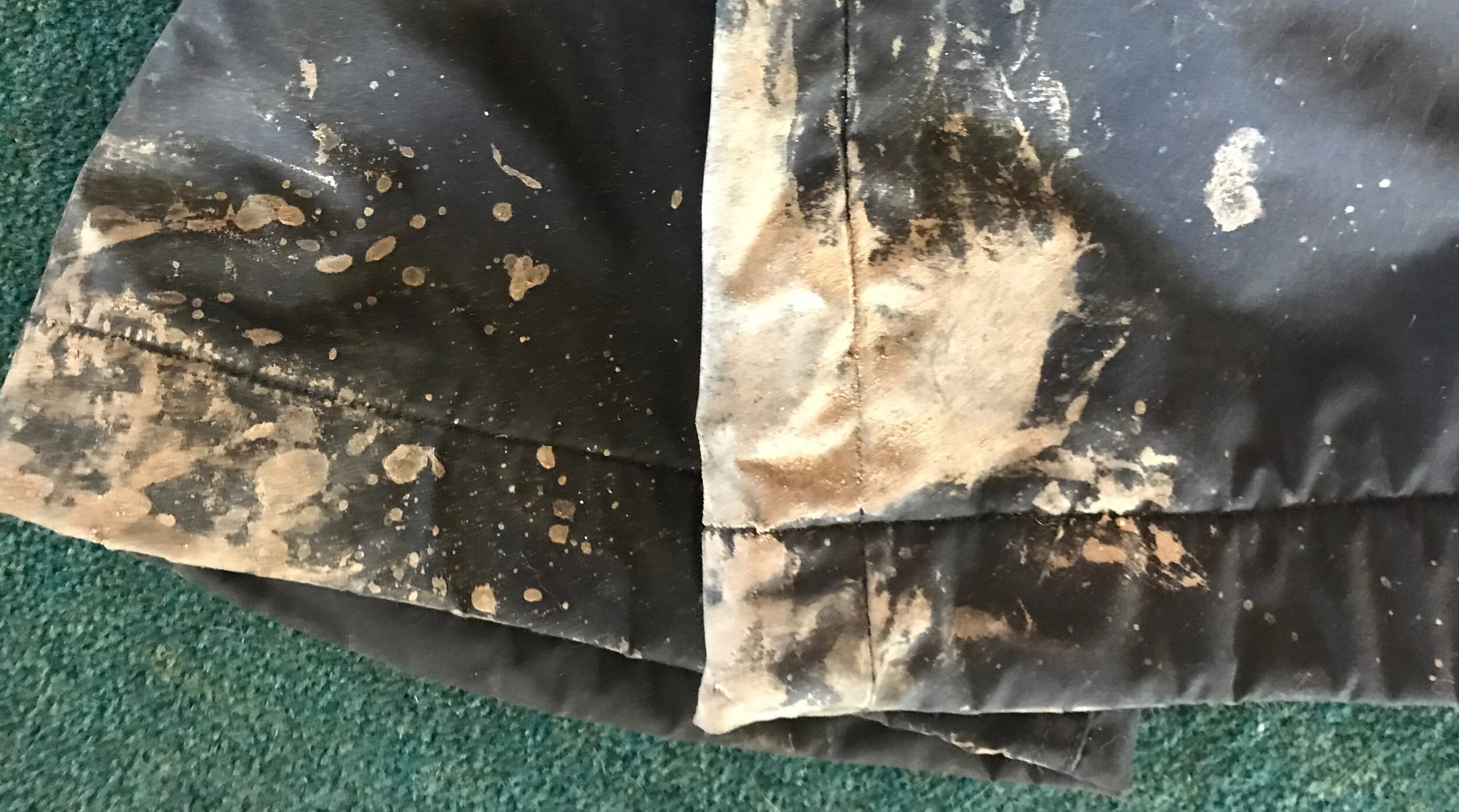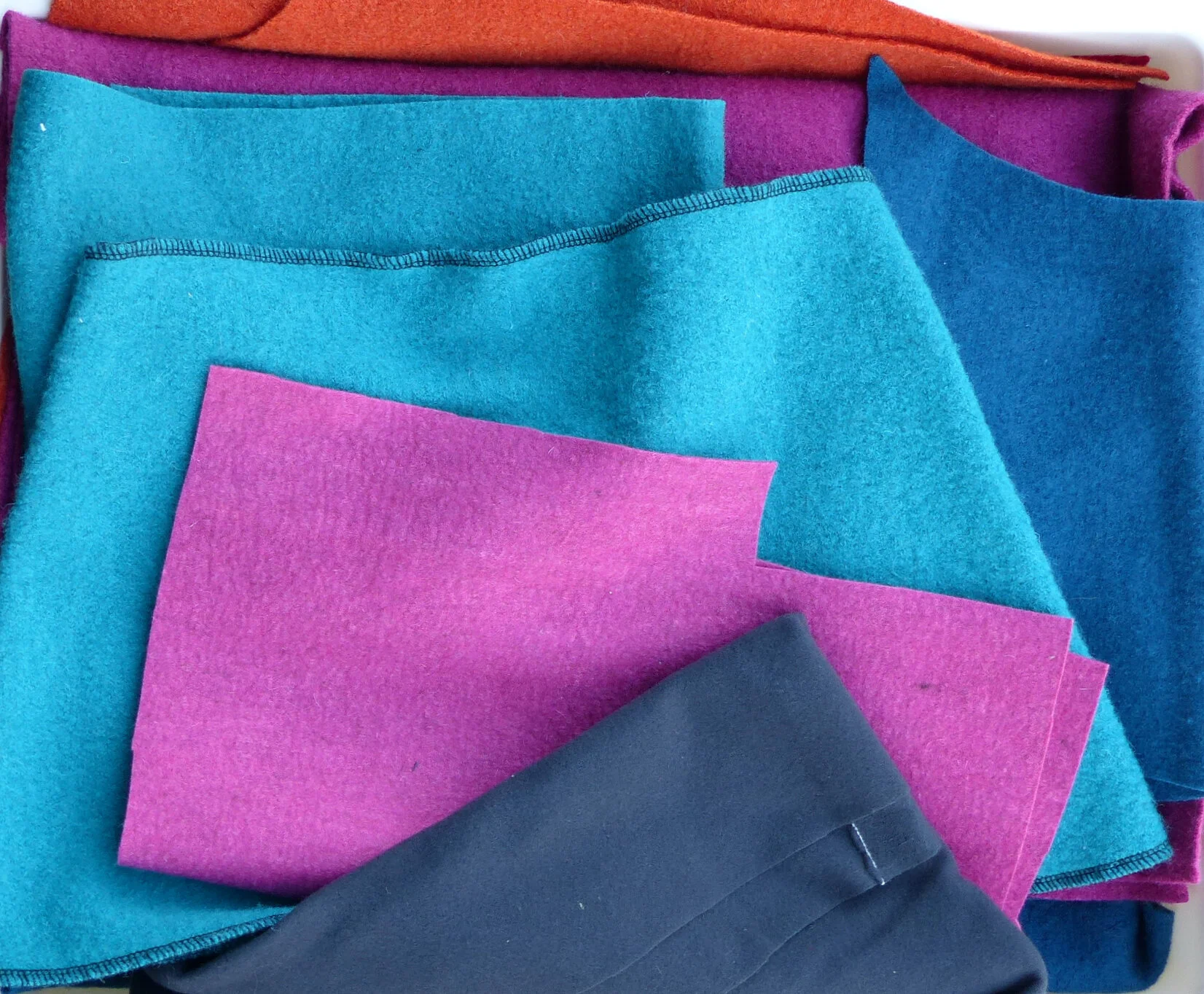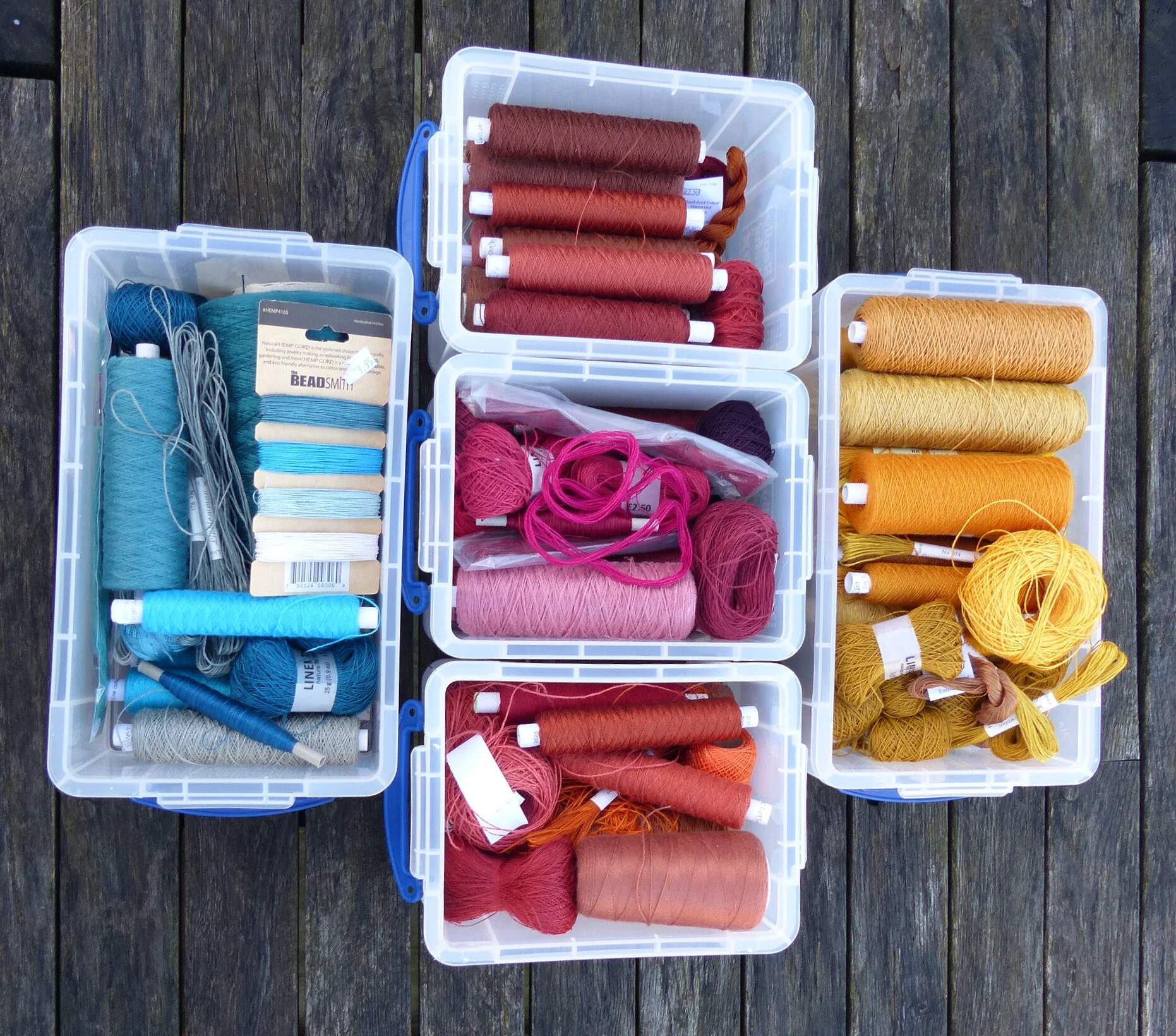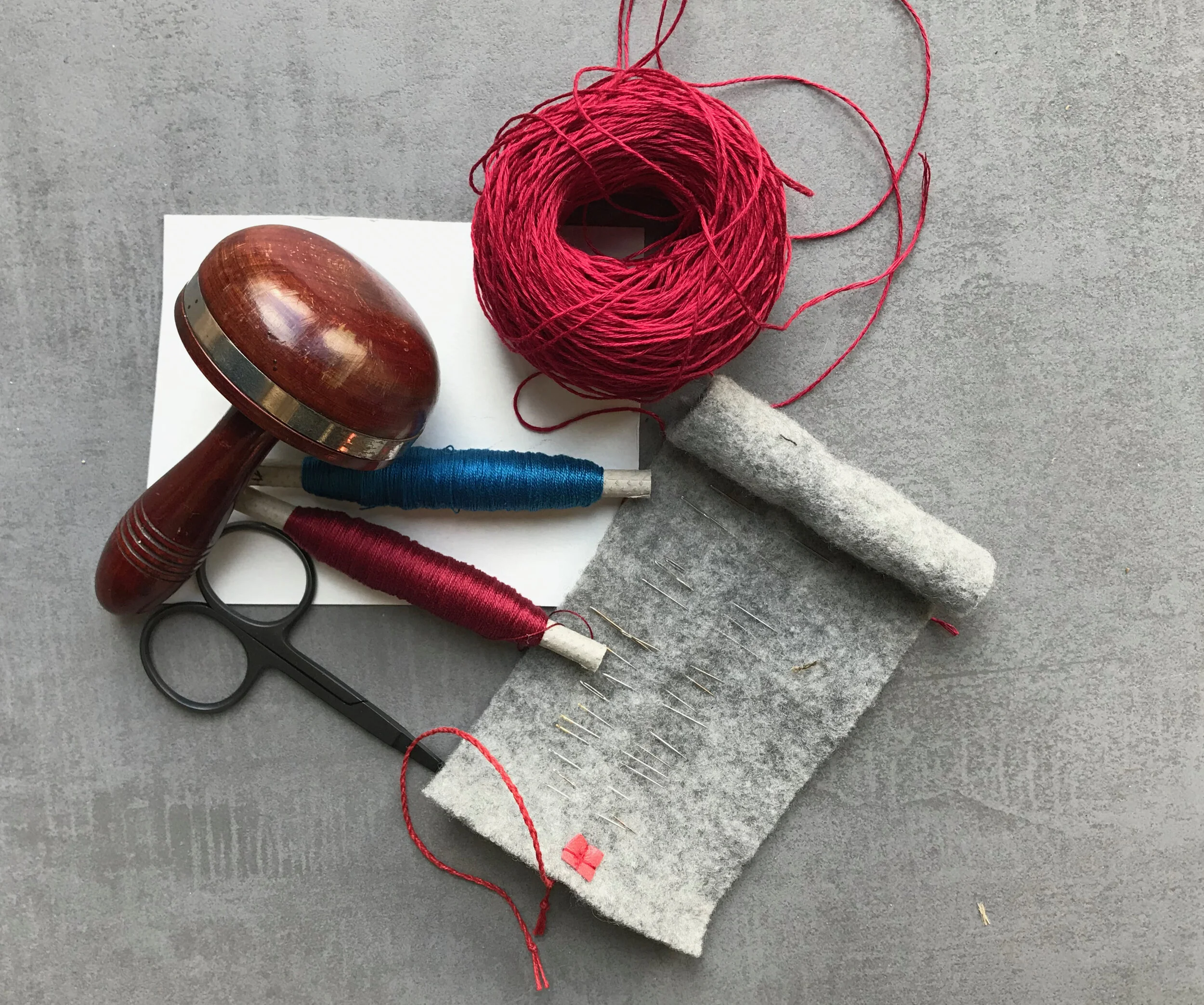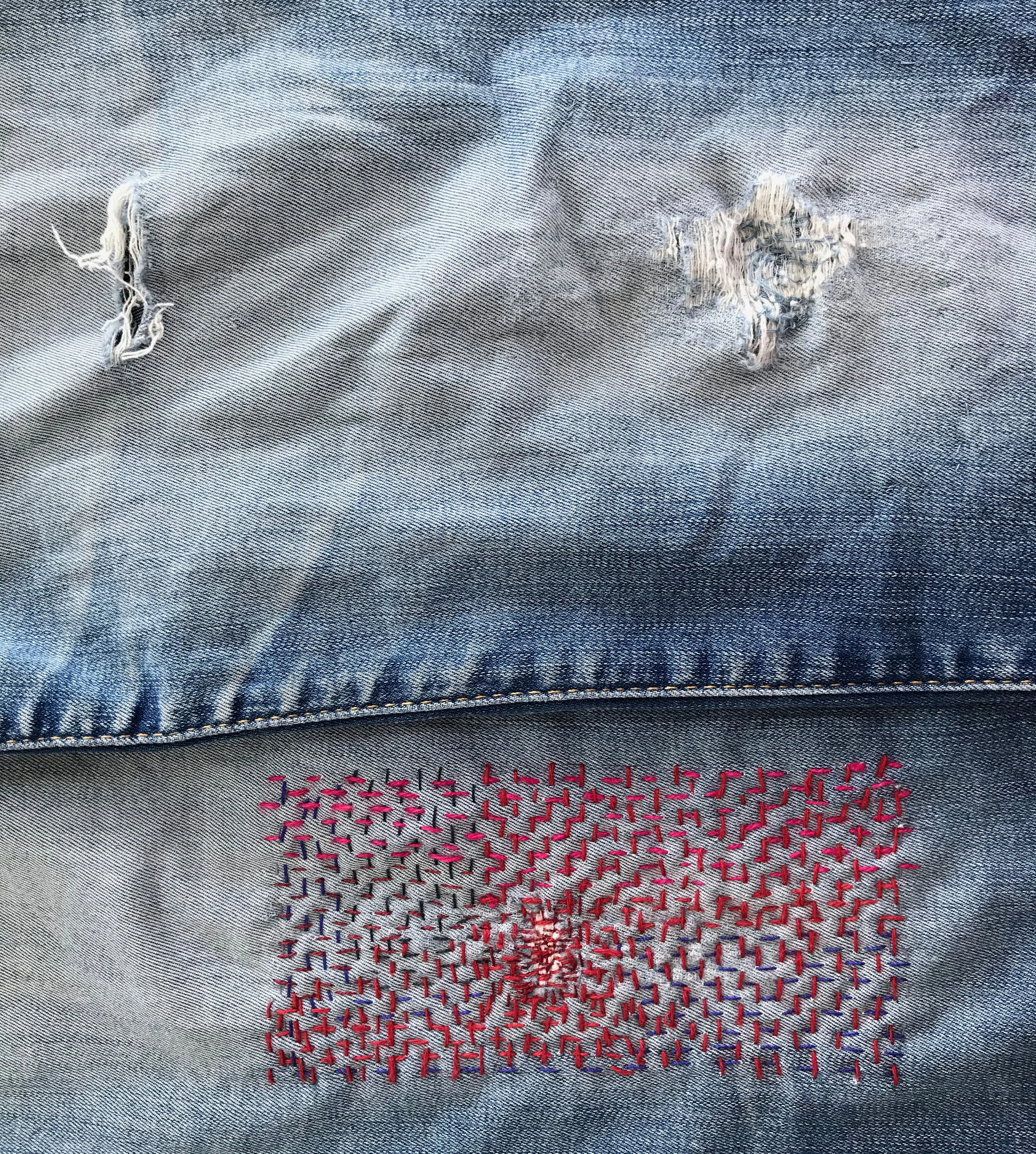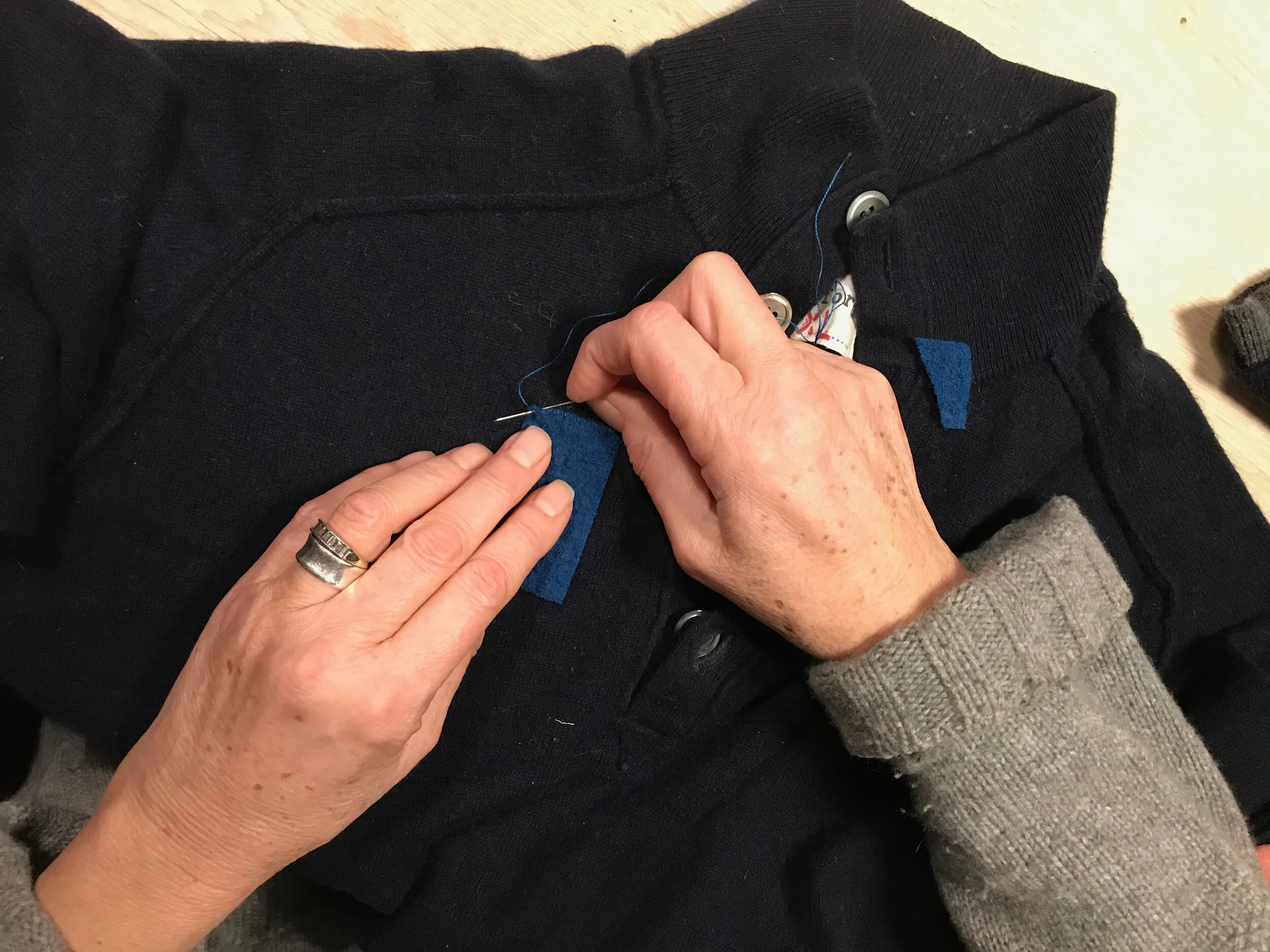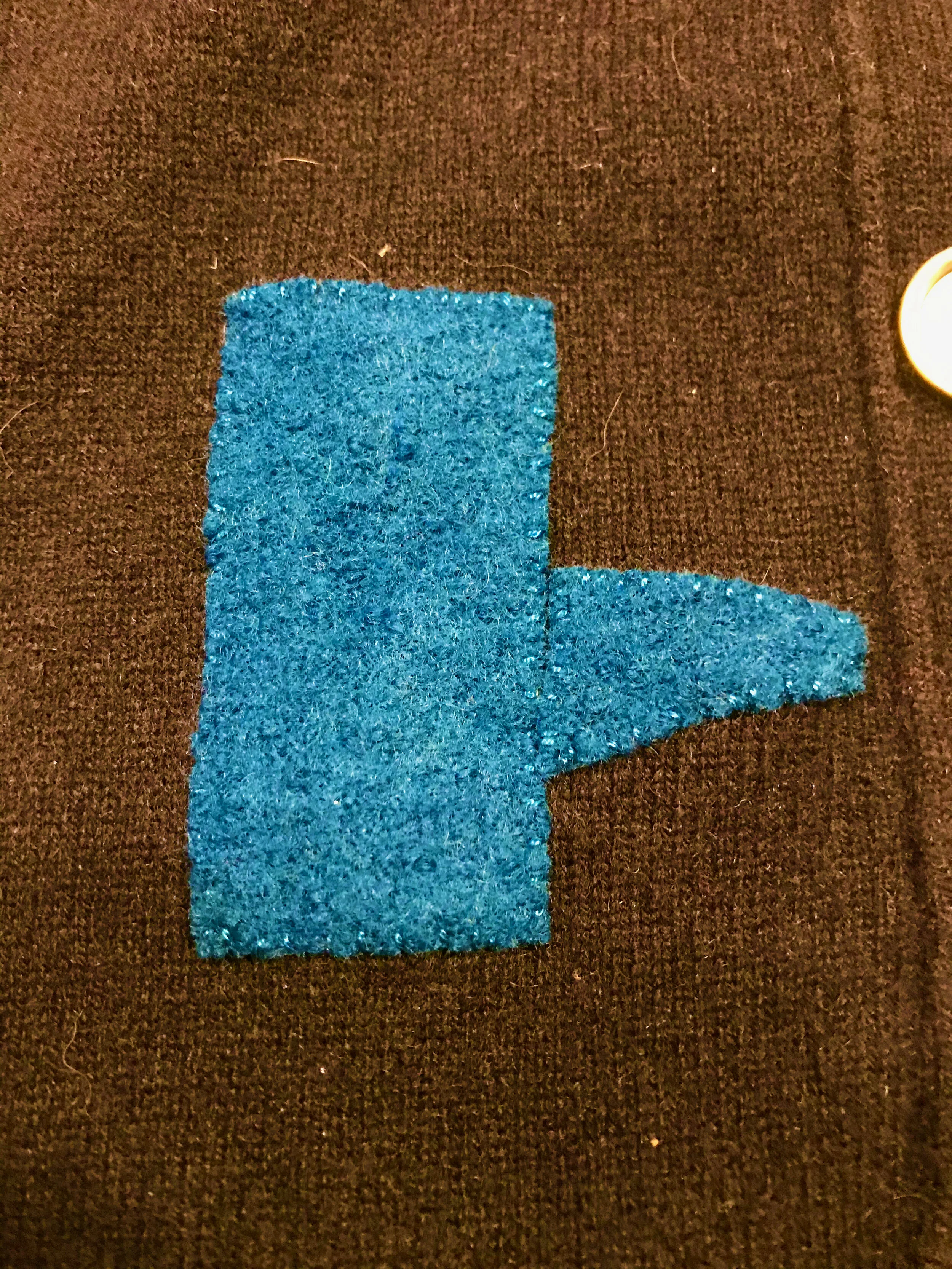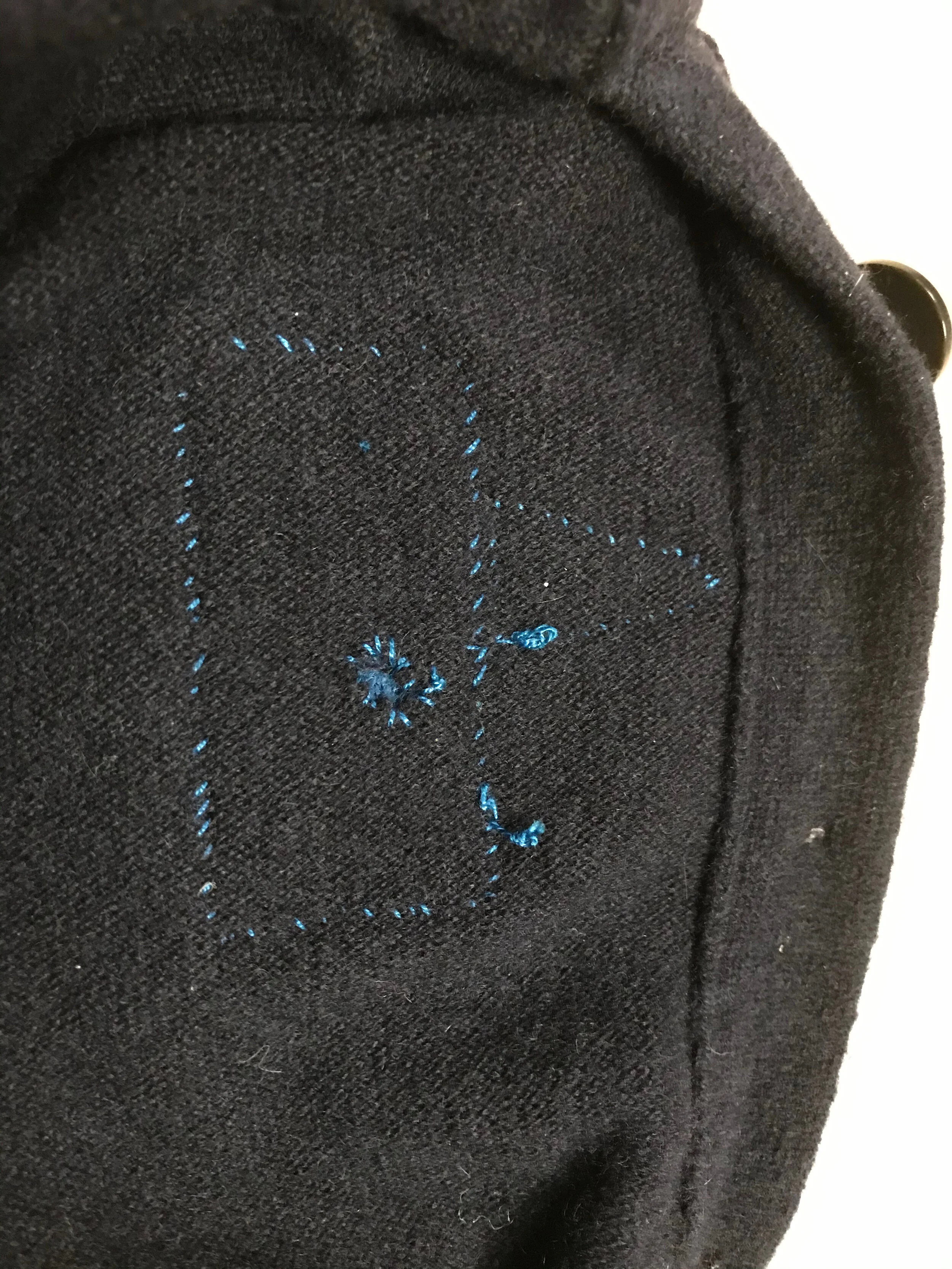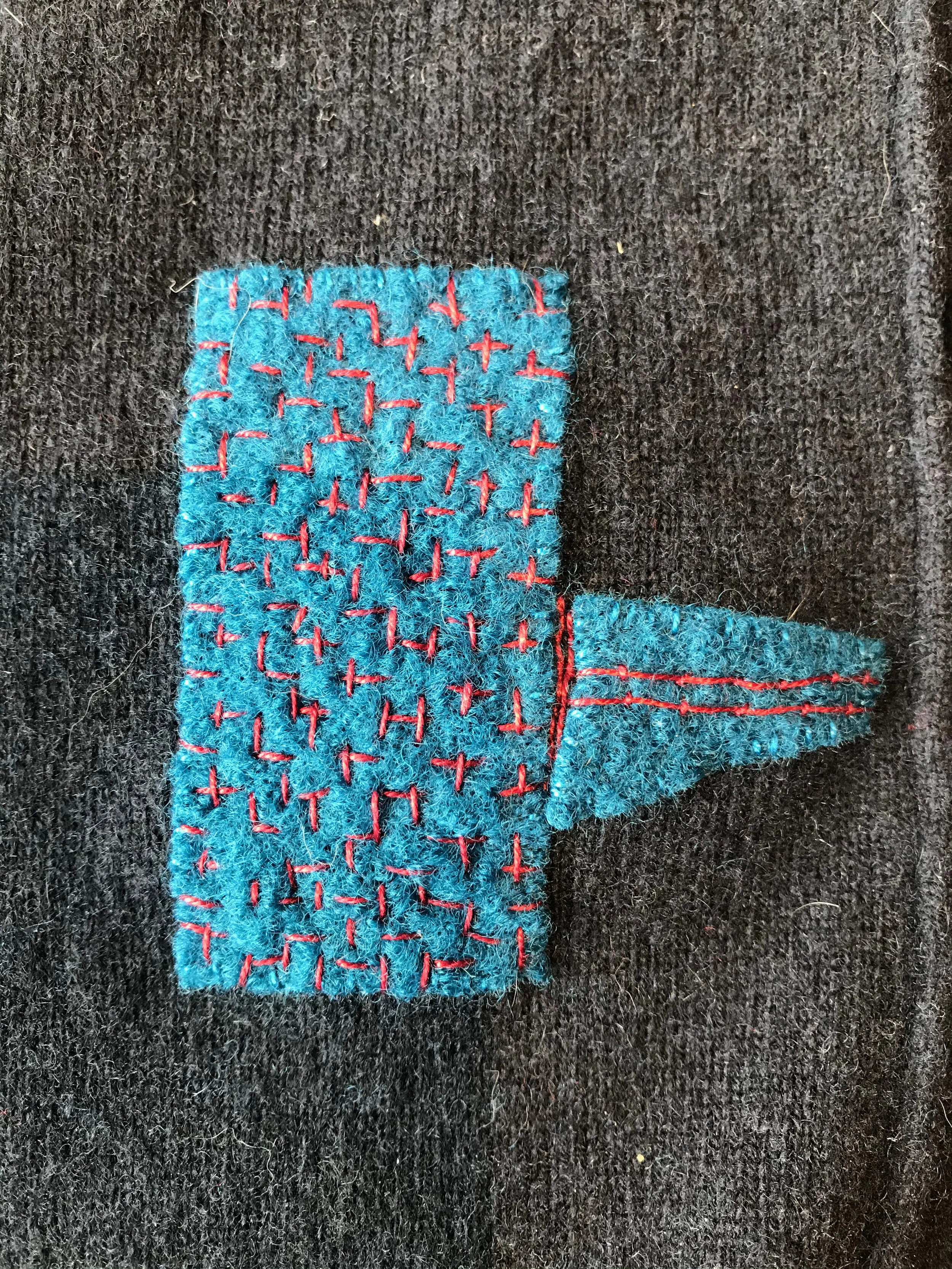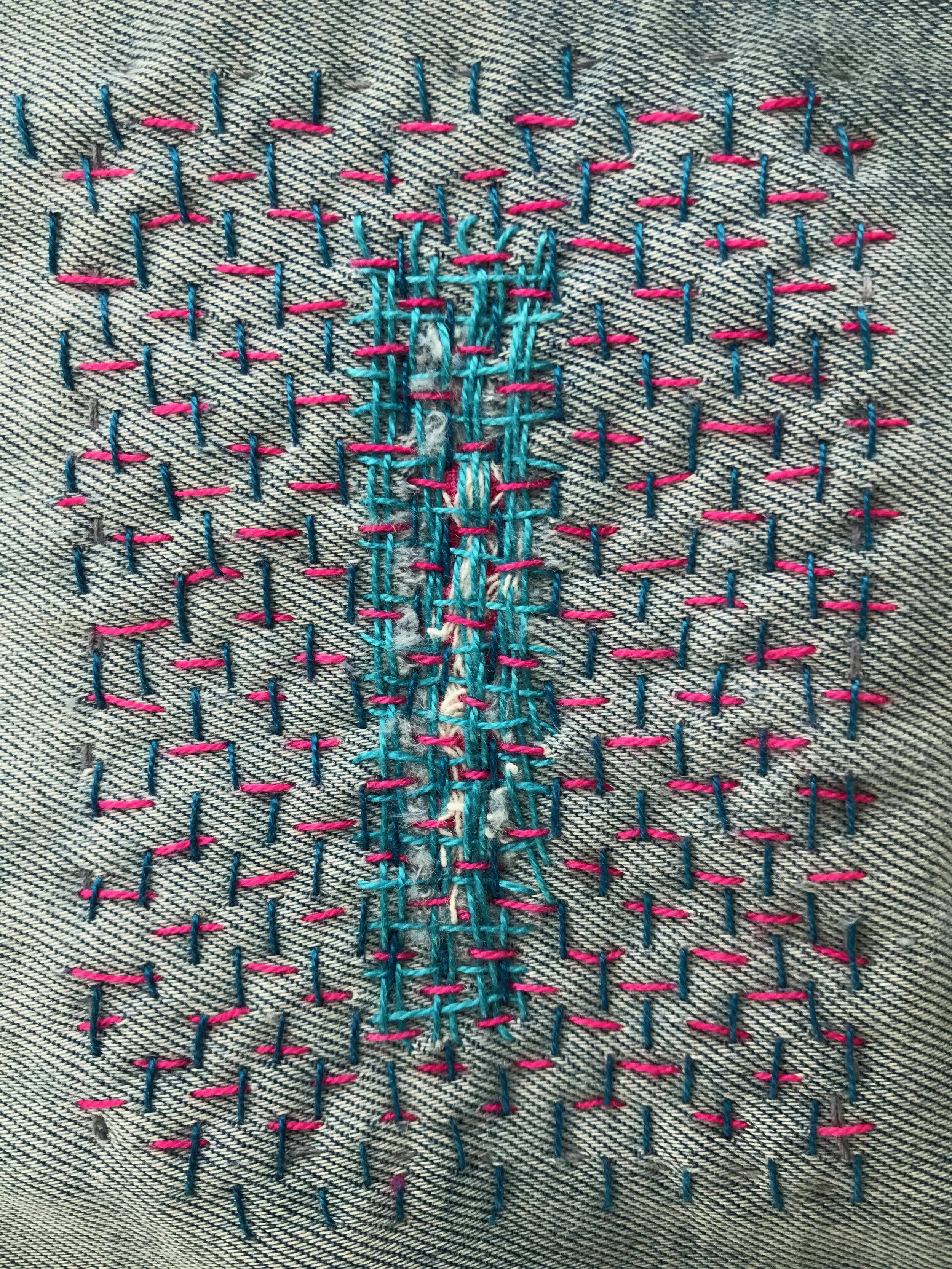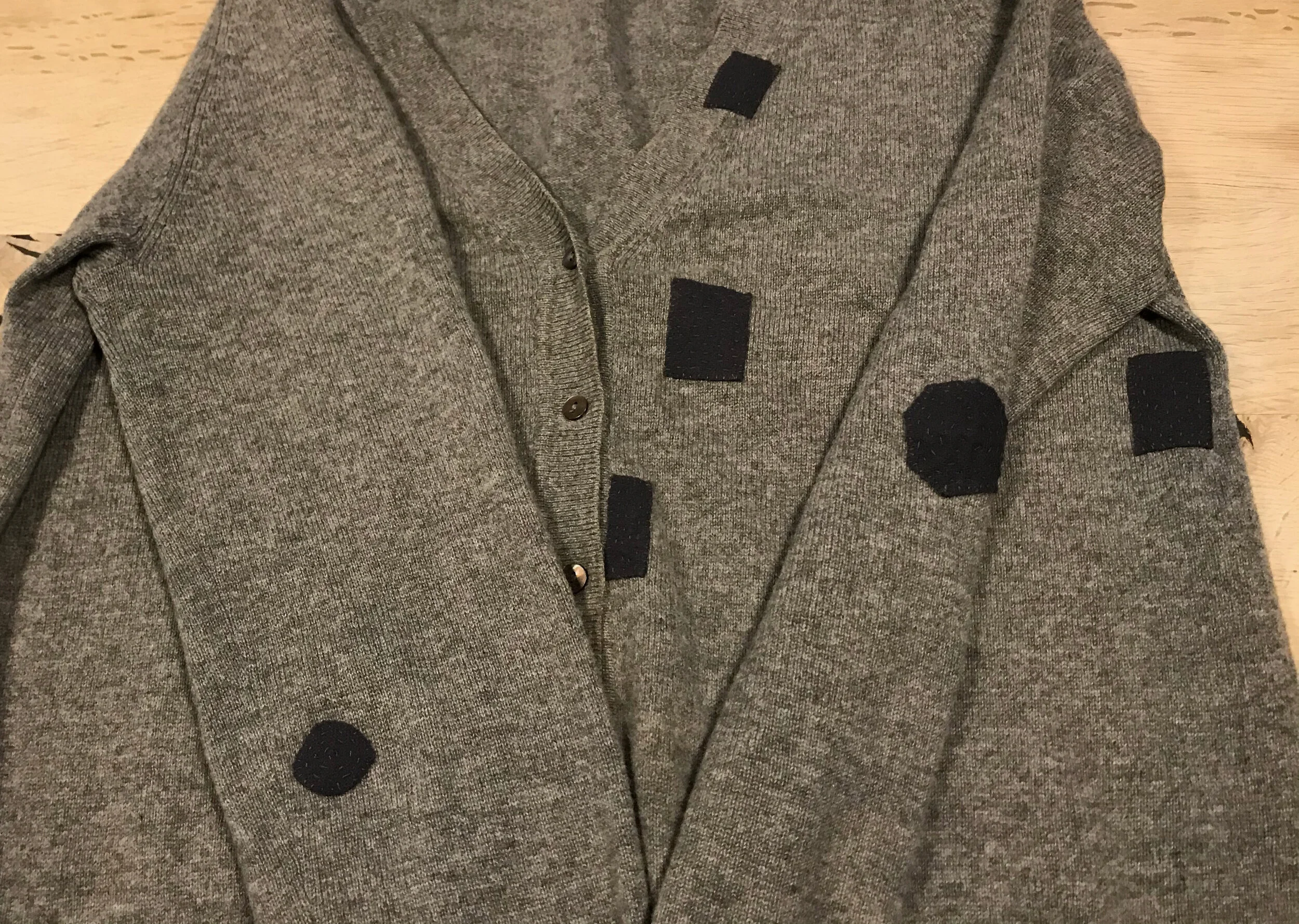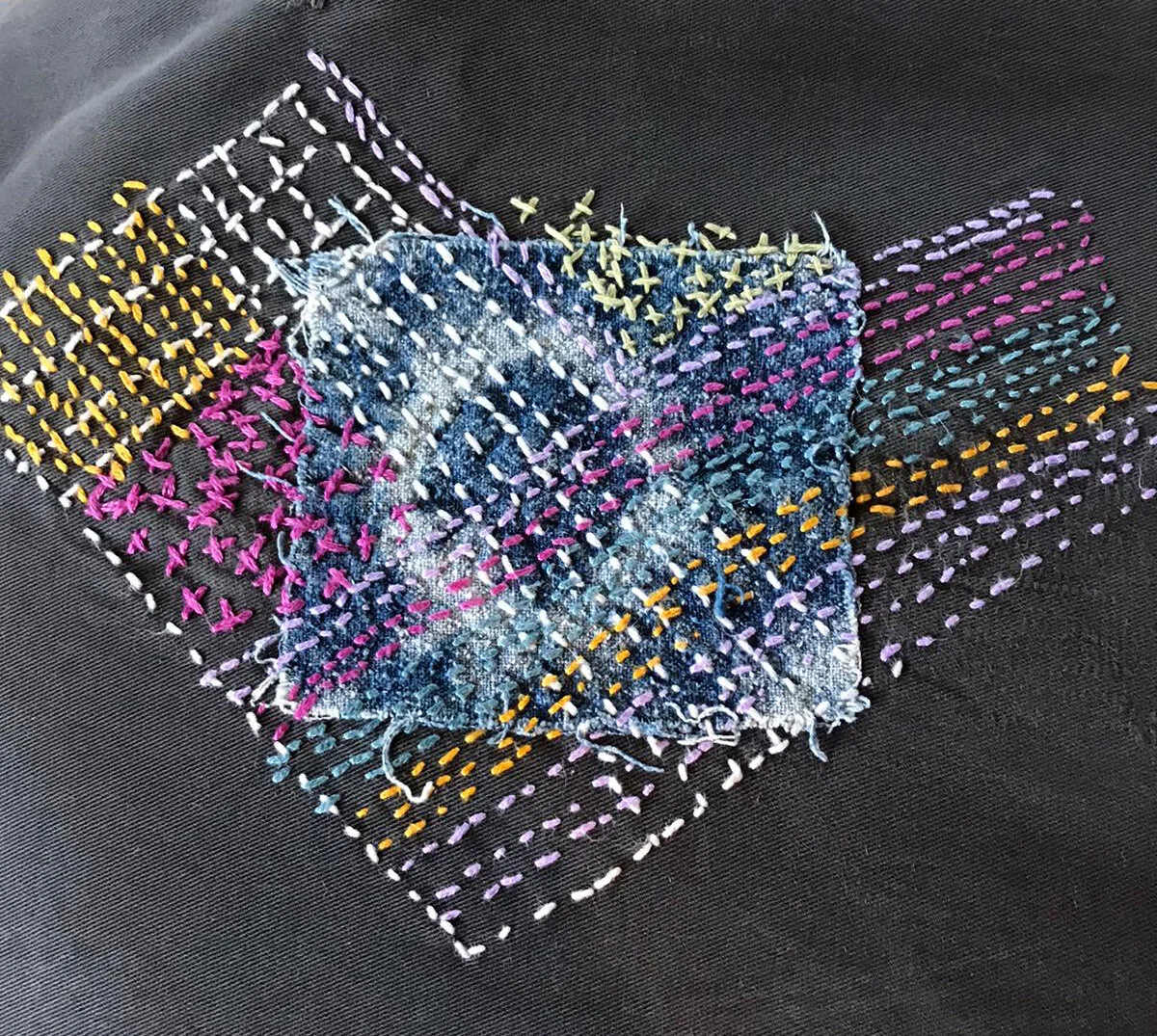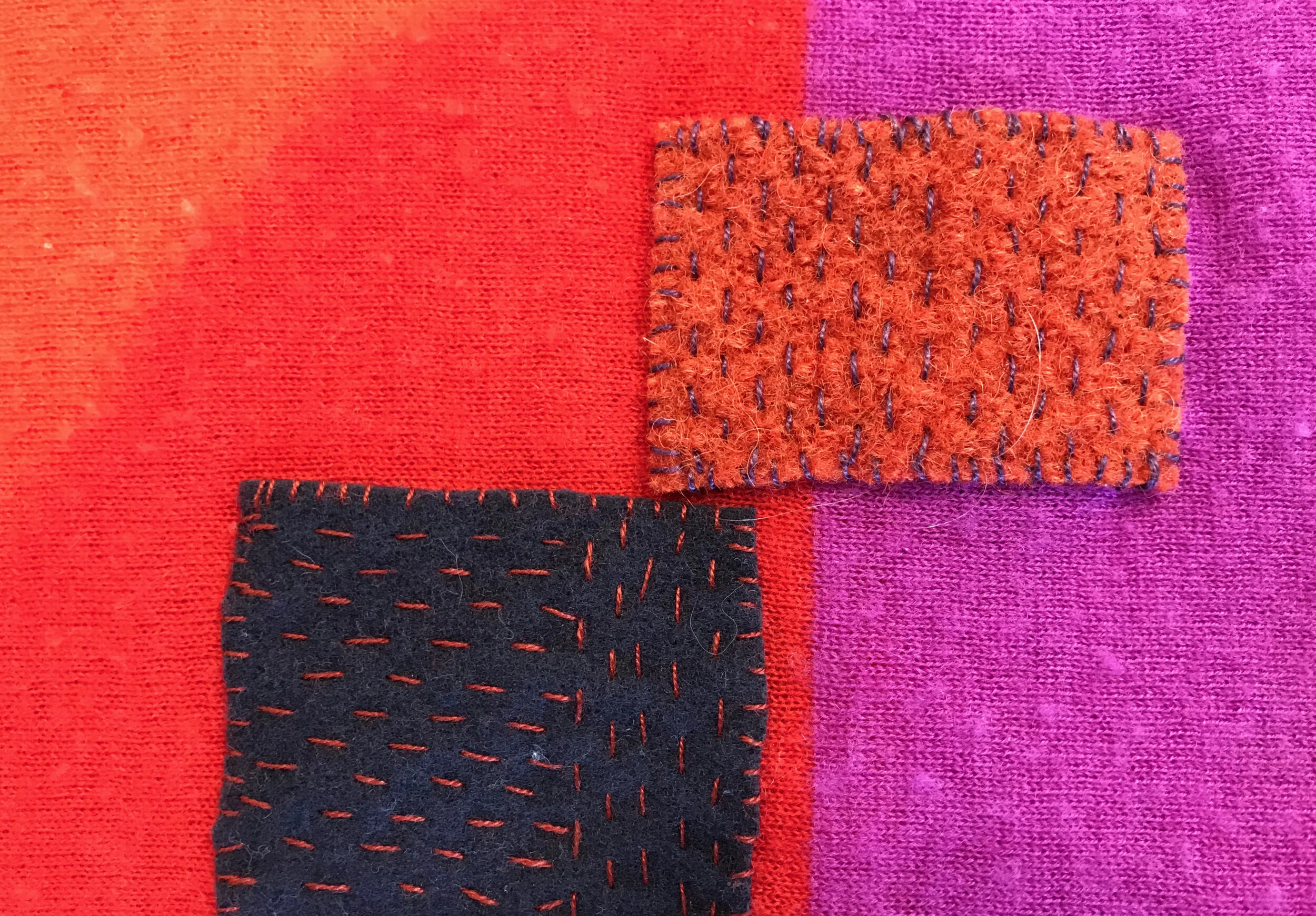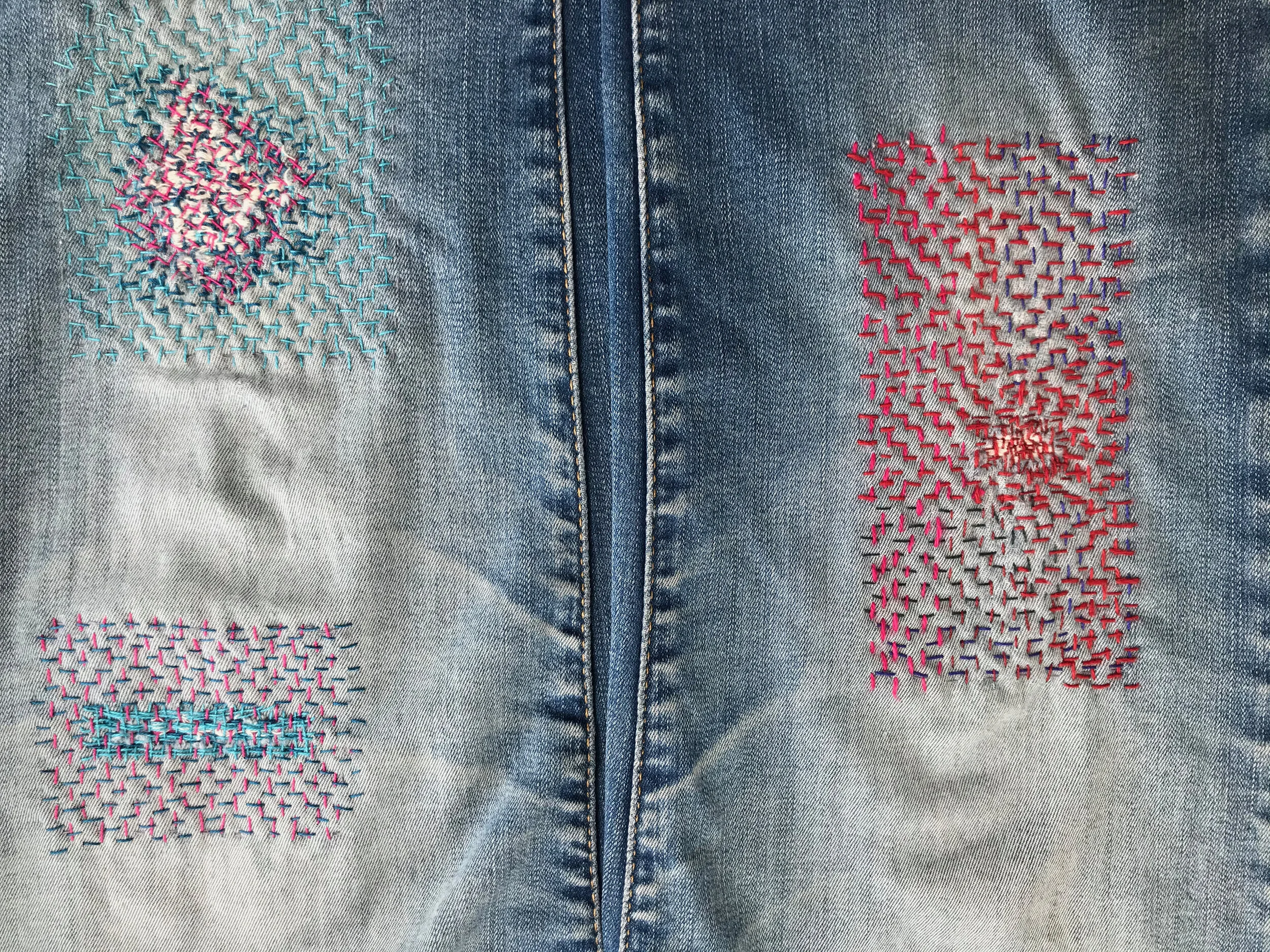Mending Our Ways
After a busy and not-so-slow January, my work was delivered to Ann at Gallery 57, Katie got everything she needed for the catalogue and John the printer geared up for the print run. Andrew and I also worked on a short video to send out as an invitation to view the exhibition online. Now all of that has happened and the exhibition is up and running (with five pieces sold so far), what now?
Time to start thinking about the next body of work. The studio is tidy, my stash of ‘potentials’ from the summer are stacked on a workbench and a couple of backing cloths have been prepared for something I can’t quite decide whether to stitch. Which probably means I shouldn’t.., or I should at least think more deeply about it before threading a needle. And then James appears clutching a sweater. “It’s got a hole in it, can you patch it for me please”. Perfect - an opportunity to engage in something I love doing and procrastinate about where I’m going next in terms of studio work. I’ve mended other JB sweaters, patched trousers and disguised stains (he’s a maestro at throwing food down his front), and he loves them.
I think wearing visibly-mended clothing makes him feel a little rebellious. Plus, he’s generally quite reluctant to buy new clothes on the basis of not really needing anything new.
In February 2020 I wrote a blog inspired by Jem Bendall’s essay on ‘Deep Adaptation’ (2018). Now we’re in Lockdown III, the ideas around adaptation during these Covid times are very relevant. The principle of relinquishment is one of them, as Covid has forced us to relinquish a great deal. It isn’t as simple as not buying new clothes - all of us have had to forego eating out, going to concerts, the cinema, theatres or galleries. We can’t see our family and friends, holiday abroad or engage in retail therapy. We no longer have as much physical contact through handshakes, hugs and kisses and personally, I long for a massage. The no-go list is pretty endless and of course, contains the tragedy of loss on many levels.
But there are reasons to be cheerful through another aspect of Deep Adaptation; that of restoration . Bendall asks: “what can we bring back to help us with the (coming) difficulties and tragedies”. Although he’s referring to the life-changing future impact of the climate crisis, he could easily be talking about the life-changing impact of Covid 19.
Bendall says restoration involves “the rediscovery of attitudes and approaches to life that a hydrocarbon (and now Covid) fuelled existence have eroded” . One of the biggest re-discoveries is seeking out nature. The great outdoors - even if only a humble park - has offered many of us a huge amount of relief from the confinement of our homes.
Walking, running, cycling are helping us to keep us fit and offer children the chance to release pent-up energy. Observing trees, poking about in hedgerows, noticing plants, discovering insects, birds and animals bring joy and beauty into our lives. We feel the wind on our faces and can breathe deeply.
Although our outdoor excursions may have been curtailed by the grey,dreary, wet winter weather, that single Sunday of snow in January brought huge pleasure to us all. I live in the south-east and a decent snowfall is rare. Families rushed out and built snowmen, threw snowballs and slid down hills. Fat flakes fell, settled and blanketed the landscape. Stillness and silence descended. It was impossible to resist going out, and the cat came too.
I also appreciate that if you’re trying to work from home, keep the household running smoothly AND home-school your kids, disappearing down the rabbit-hole of device-led entertainment, flumping onto a sofa and switching on to switch off may be the only form of activity you can handle - and I’m no stranger to the delights of Netflix and the iplayer. But I know many people have reintroduced more traditional forms of play and relaxation; board games, cards, dominos, art (watch Grayson’s Art Club on Channel 4 for encouragement), craft, DIY, reading, cooking, baking and gardening.
Mending is a wonderful form of restoration - any garment can be made whole again with a bit of cloth, some thread and a needle. And I’d argue that often, the garment looks better for its mend. Even if that mend is a bit imperfect, it shows we’ve taken time and care to look after and value our stuff.
Mending is easy to do and although I appreciate that as an artist working with textiles, my stash of thread and scraps is likely to be somewhat larger than yours, here’s a quick guide - by no means any kind of masterclass - and I have supplied a resources list if you wish to go deeper.
Washing: wash the garment so it’s pleasant to handle. This is an important step for me as James likes to garden and has a workshop. As such, his work clothes (and quite often, his nice clothes) are generally covered in mud or sawdust, with the occasional bit of blood when things go wrong with a chisel or somesuch. He’s also not averse to wearing something for several days…
Patches: if the hole is large, try and find some cloth you could use for a patch. Perhaps you have an old tea towel, T-shirt or a random sample of curtain fabric, lurking in a drawer. I’ve learned that when a garment is truly beyond restoration, there’ll always be some part of it that can be chopped off and used as a patch on some future mend.
Sweaters accidentally shrunk in the washing machine are fabulous; non-fraying, dense and soft to handle. I have a box full of such things, along with off-cuts of the cloth I use for my artworks, and boiled-wool scraps from clothing projects.
Worst case scenario would be to buy a new tea towel for your kitchen and sacrifice an old one for patches. You can of course work without a patch and engage in true darning. I’m not the greatest darner in the world and like to have the support a patch can offer.
Thread: it’s a truism that whenever I begin a new piece of work involving hand stitch, I never have quite the right colour of thread. As a result, I have rather a lot of thread…, her are four of my many boxes...
Don’t worry about colour matching thread to the garment colour - contrast is good and if you’re a novice, stitching will be easier as you’ll be able to see what you’re doing. Of course, if you prefer to blend and colour match, knock yourself out.
And don’t go for thick, chunky threads. A not-too-thick cotton thread is a good choice for most projects (try the ones from Paintbox Threads, they’re delicious).
Sewing kit: get a selection of needles that vary in length and size of eye. Darning-style stitches are generally easier with a longer needle and embroidery and general sewing needles are useful. A few pins can help and perhaps some of you’ve held on to Grannie’s sewing box? In which case it may contain an easy-threader gadget and a small pair of scissors. If you get really lucky, you may even find a darning mushroom (mine was my grandmother’s), a really useful tool.
In the absence of a darning mushroom, use a small water glass or a mug. A piece of a cereal packet is also helpful - cut out a couple of sizes; one measuring about 10cm square, the other maybe 8x16cm as long thin pieces can be good for long, thin tears (stay with me, you’ll find out why in a second).
Preparing the patch: cut a patch that’s bigger than the hole as the fabric around the hole is likely to be weak, and you’re looking for a strong mend. You can choose to go for a seriously large patch to support both the hole and the weak fabric, as I’ve done with my Mum’s jeans and JB’s trousers:
The patch can have raw or turned edges - your choice - but if turned under, iron the hems down before you start sewing. The patch can be inserted on the inside of the garment (above, bottom left), or the outside (the yellow patch on the right), or mix and match.
Anchoring the Patch; some holes are a bit hard to get at without ending up with a chunky bunch of fabric in your hands. Let’s say you’ve got a hole in the knee of a pair of jeans or halfway up the sleeve of a sweater. If the patch is to be on the outside, keep the jeans/sweater turned right-side out (see next image) and slide your trusty piece of cardboard into the garment and under the hole. Place the patch on top and anchor with a pin or two - I’m anchoring here and the cardboard is under the patch.
If the patch is to be on the inside, turn the garment inside out and proceed as discussed, and don’t panic about being able to see your stitches on the right side - this can be cleverly disguised or left as a feature. Use a toning or contrasting thread to stitch around the outside edge; the piece of card will prevent you stitching one side of the leg/sleeve to the other as you’ll be able to slide the needle onto the cardboard, and slide it back up through the fabric.
In the following image, I’m anchoring the patch and my piece of cardboard is underneath the top layer of the sweater:
The darning mushroom does the same job but is domed so sweaters or T-shirts can be slightly stretched over the dome. I find the mushroom really useful for knitwear but if you don’t have one, try a glass, a cup or a small plastic pot.
The next two images are the same jumper but the light must have changed dramatically between shots, as they’re completely different colours. No matter, the point is to show you the ‘anchored’ patch on the left, and what it looks like on the inside of the sweater. The sticky-out bit is completely unnecessary, but less boring than a plain old rectangle.
So, your patch is now secure. At this point, you could choose to call it a day and have a simple patch. Or you could start getting arty-farty.
Stitching for pleasure: this is the fun part as far as I’m concerned. It’s slow, meditative and tactile. At this stage, I prefer to abandon the piece of card or the darning mushroom and stuff my arm and hand up trouser legs and into sleeves - you’ll need to have a go and experiment to know what approach works best for you. Choose any colour you like and start stitching into the patch - simple running stitches are just fine but you can get fancier if you want to.
Work in one direction to begin with (e.g. across the patch) and then consider working in the other direction (up and down the patch).
Arty-farty.., and the inside of the sweater
Stay within a simple colour range or mix up your colours. Do a spot of ‘weaving’ through areas of stitch for a colour ‘splat’. Try different stitches.
The jeans featured in the next image belong to my mum. Just before Lockdown One she was lamenting “these are too disgraceful to wear for anything except gardening, and they’re my best-fitting pair”. I whipped them away pretty smartish and told her I’d post them back once I’d finished with them. She’s now very happy and wears her mended jeans with panache.
Mixing colours and a ‘splat’ of weaving
Next, my friend Zue handed over a sweater and a pair of jeans. They got mended. In our few brief months of freedom, Zue wore her restored garments and another friend, Joan, fell in love with them.
Zue’s cardie: plain patches so she can choose what colour to wear with it.
After an afternoon of conversation, tea and a bit of a tutorial, Joan could mend. Her skills were further developed by watching YouTube videos (a.k.a. mending porn) and buying a couple of the books mentioned at the end of this blog. She is now a stellar mender.
In fact, I think she's addicted to mending. Cupboards are scoured, drawers are ransacked and I suspect she may even be deliberately distressing George’s jeans in order to mend them.
A drift of pink, and I think the cardie is so much more interesting now.
This sweater of Joan’s has so many tiny holes in it she’ll be occupied for life! I’ve suggested deliberately shrinking it before cutting it up for patches
Joan reckons mending has helped keep her sane during the lockdown periods. She loves the colours and feel of the threads, the choosing of patches, the soothing repetition of needle in, needle out and the delightful end result. Menders don’t simply restore their garments, they restore themselves.
Job done
And if you’ve nothing to mend, consider hand stitching clothing, blankets, cushion covers - even your socks. This final image shows a wool dress I’ve owned for many years but haven’t worn much as it’s rather funereal. I’m now improving it with red seed stitching around the collar.., and I’ll probably get carried away and start drifting stitches down though the dress itself.
Hand stitch, darning and patching all have the benefit of simplicity. No specialist materials are called for, everything you need will probably fit into a small box and you can pick things up, put them down and work at your own pace. Do have a go, you might be surprised at how satisfying it is.
I just need to mention that this blog came about after I was asked to contribute a blog to a wonderful website called Reasons to be Cheerful ( www.reasonstobecheerful.co.uk ). And I do think mending is a reason to be cheerful when you step out wearing your beautifully restored clothing!
Take a look at the site - there’s something there for everyone - blogs, videos, images, podcasts - I’m sure you’ll find something to interest you and cheer you up in these difficult times.
And if you haven’t checked out my exhibition at Gallery 57, please do. Ann Symes has done a fantastic job of curation and the ceramics and wood that support my art are fabulous. The exhibition runs until March 13th and you can visit online at www.gallery57.co.uk . My own website now has a short, 4 minute video showing how the landscape of the Atacama Desert inspired the art.
And on the following page I’ve listed some resources.., should you become devoted to mending and hand stitching!
RESOURCES
BOOKS
The first two books are very practical and offer ideas and tutorials on all aspects of mending and darning, but don’t expect your mends to immediately look as good as the ones shown in the images! The third book - Slow Stitch - is more focused on the role of stitch in art textiles. It does offer guidance and inspiration but not necessarily related to mending.
Darning - repair, make, mend: Hikaru Nogchi, Quickthorn 2019, ISBN 978-1-912480-15-9
Mending Matters: Katrina Rodabaugh, Abrams 2018, ISBN 978-1-4197-2947-8
Slow Stitch - mindful & contemplative textile art: Claire Wellesley-Smith, Batsford,, ISBN 978-1-849942997
ONLINE & MAGAZINE RESOURCES
Embroidery: if you get addicted, this quarterly magazine offers much inspiration in terms of traditional, historical and contemporary embroidery, stitch and textiles. www.embroiderymagazine.co.uk
Selvedge: a beautiful, quarterly magazine, stuffed full of all things textile from around the globe. www.selvedge.org
Download a copy of this blog here



